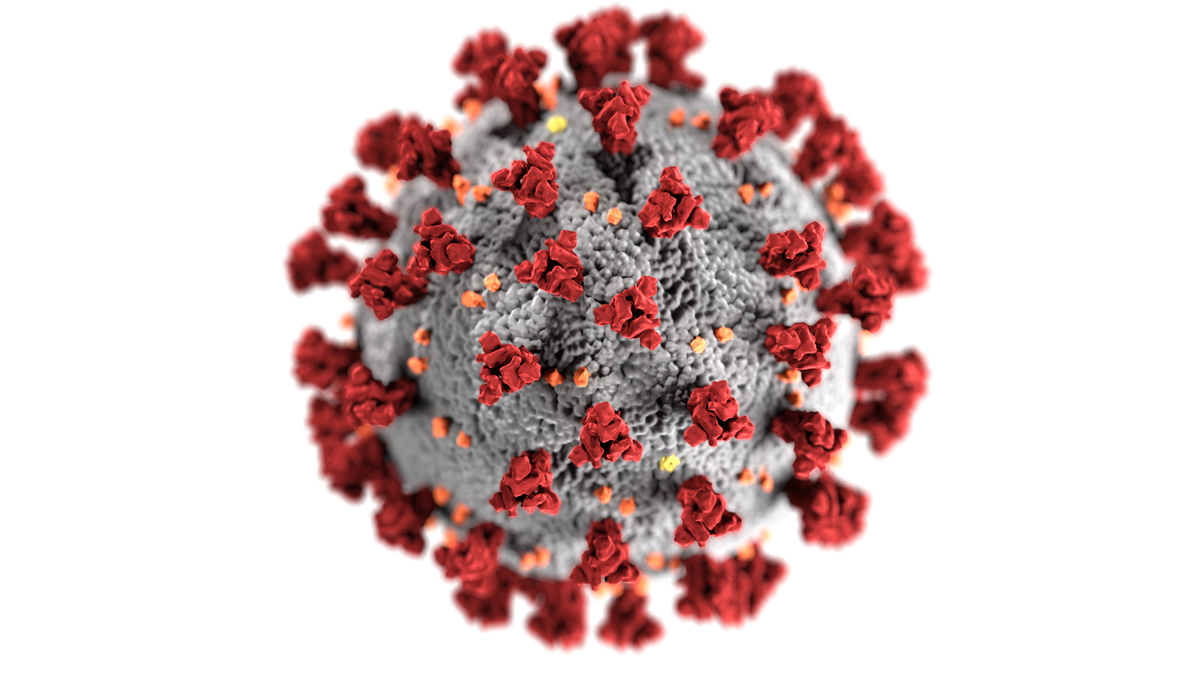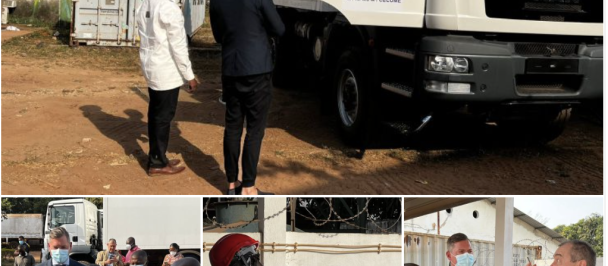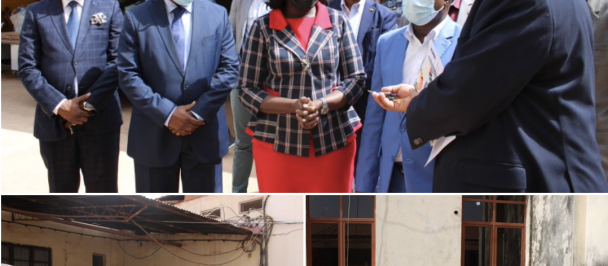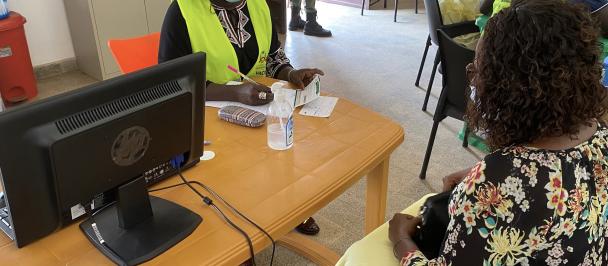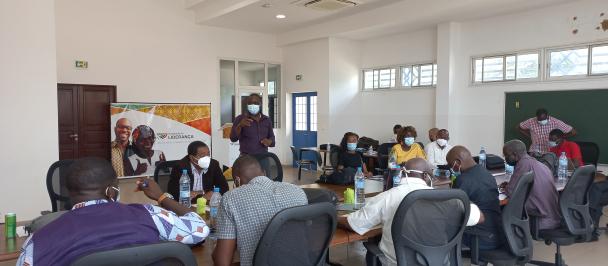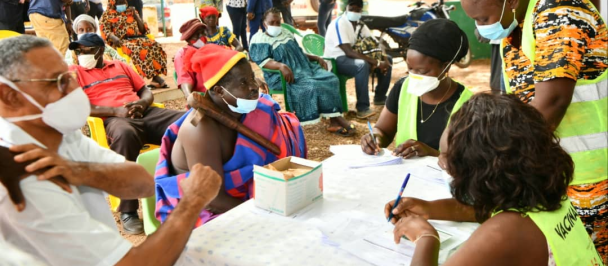What is COVID-19?
COVID-19 is the infectious disease caused by the novel coronavirus, first identified in December 2019 in Wuhan, China.
What are the symptoms displayed by someone infected with COVID-19?
The most common symptoms of COVID-19 are fever, exhaustion and dry cough. Some patients can experience pain, nasal congestion, runny nose, a sore throat or diarrhoea. These symptoms are generally mild and kick in gradually. Some people are infected but have no symptoms and don’t feel ill. Most people (about 80%) recover from the disease without needing any special treatment. One in every six people with COVID-19 falls seriously ill and develops breathing difficulties. Old people and those with other health conditions like high blood pressure, heart disease or diabetes, are the most likely to develop serious symptoms. People with fever, cough and breathing difficulties need medical care.
Can coronaviruses be passed on from one person to another?
Yes, some coronaviruses can be transmitted from person to person, generally after close contact with an infected patient, for example, at home, at the workplace or at a healthcare centre.
How does the virus responsible for COVID-19 propagate?
The virus that causes COVID-19 can propagate from one person to another through droplets from the nose or mouth which spread out when a person with COVID-19 coughs or sneezes. Most of these droplets fall on surfaces and close objects – like tables or telephones. People can also be contaminated with COVID-19 if they breathe in droplets from a person with COVID-19 who coughs or sneezes. This is why it is so important to keep a distance of more than 1 metre (3 feet) from an ill person.
Can the virus causing COVID-19 travel through the air?
Studies available suggest that the virus causing COVID-19 is transmitted mainly through the contact with respiratory droplets – and not through the air.
Is it possible to be contaminated with COVID-19 by a person who doesn’t show any symptoms?
The main way the disease spreads is through respiratory droplets expelled by someone coughing. The risk of catching COVID-19 from someone without symptoms is very low. However, many people with COVID-19 only have mild symptoms – particularly in the early phases of the disease. This means that it is possible to be contaminated with COVID-19 from someone who has, for example, only a slight cough and doesn’t feel ill.
Can I be contaminated with COVID-19 through the faeces of someone who has the disease?
The risk of being contaminated with COVID-19 from the faeces of an infected person appears to be low. Although initial investigation seems to indicate that the virus might be present in faeces in some cases, the dissemination through this channel isn’t one of the main characteristics of the outbreak. The WHO is evaluating current investigation on the ways COVID-19 is disseminated and will go on sharing new findings. This is one more reason for us to wash our hands regularly, especially after using the toilet and before eating.
Is there any vaccination or drug against COVID-19?
Not yet. To this moment, there is no vaccination or specific antiviral drug for COVID-2019 prevention or treatment. People infected should receive healthcare to ease the symptoms. People who are seriously ill have to be hospitalized. Most patients recover due to supportive care. Currently possible vaccines and some specific drug treatments are being investigated and subject to clinical testing. The WHO is coordinating efforts to develop vaccines and drugs to prevent and treat COVID-19. The most effective ways of protecting oneself and others against COVID-19 are washing your hands regularly, covering the mouth with the inner part of the elbow or a handkerchief when coughing and keeping a distance of at least 1 metre (3 feet) from people who are coughing or sneezing.
What can I do to protect myself and to avoid transmission to other people?
Most people infected have a mild disease and recover, but it can be more serious with other people. Keep yourself informed of latest developments concerning COVID-19 and do the following to take care of your health and to protect that of others.
Ø Wash your hands with water and soap or an alcohol-based hand sanitizer in order to kill any virus you could have on your hands.
Ø Keep a distance of at least 1 metre between yourself and any person who is coughing or sneezing. When someone coughs or sneezes, he or she pulverizes tiny drops of liquid from the nose or mouth, which may contain virus. If you are very close, you can breathe in the droplets – including the COVID-19 virus if the person who is coughing or sneezing has the disease.
Ø Avoid touching your eyes, nose and mouth. Your hands get in touch with many surfaces and can be infected by virus. Once contaminated, your hands can transfer the virus to your eyes, nose or mouth. From there, the virus can enter the body and infect you.
Make sure you and people around you follow a good respiratory hygiene. That means covering mouth and nose with the inner side of the elbow or a handkerchief when coughing or sneezing (after that toss the used handkerchief immediately). Droplets spread the virus. If you follow a good respiratory hygiene, you protect people around you against viruses responsible for colds, flues and COVID-19.
Ø Stay at home if you don’t feel well. If you have fever, cough and breathing difficulties, seek medical care. Follow the instructions of your national or local health authority, as it is who has the most up-to-date information about the situation in your area at any given moment.
Ø Ill people should adjourn or avoid travelling to areas affected by coronavirus. Areas affected are countries, areas, provinces or cities where there is ongoing direct transmission -- not areas where there are only imported cases.
Ø Travellers who return from affected areas must monitor their symptoms for 14 days and follow the national protocols of receiving countries; and, if there are any symptoms, they must see a doctor and inform him on their travel history and symptoms.
What are the WHO guideline for the use of face masks?
The WHO recommends surgical masks to be used under the following circumstances:
Ø People with respiratory symptoms such as cough or breathing difficulties, even when they go to see healthcare professionals and people who assist individuals with respiratory symptoms, as well as healthcare professionals when entering a room with patients or treating an individual with respiratory symptoms.
Ø The use of masks is not needed for people who don’t display respiratory symptoms. However, masks can be used in some countries according to local cultural habits.
Ø People using masks should follow good practices of use, removal and disposal, and sanitize their hands adequately before and after removal. They should also keep in mind that the use of masks must always be combined with other protective measures.
What is the incubation period of COVID-19?
The incubation period is the lapse of time between the moment one is infected by the virus and the moment desease symptoms start to appear. Current estimates of the incubation period vary between 1 and 14 days, most frequently about five days. These estimates are being updated as more data becomes available.
Can I be contaminated by my pet animal?
No. There is no evidence that the animals that keep us company, or pet animals, like cats and dogs, have been infected or can spread the virus that causes COVID-19.
How long does the virus survive on surfaces?
We don’t know exactly how long the virus that causes COVID-19 survives on surfaces, but it seems to behave like other coronaviruses. Quite a few reports (including preliminary information about the COVID-19 virus) indicate that coronaviruses can persist on surfaces for a few hours or even several days. This can vary according to various conditions (for example, type of surface, temperature or air humidity).
Is it safe to receive a parcel from any area where COVID-19 was notified?
Yes. The probability for an infected person to contaminate commercial goods is low and the risk of being contaminated with the virus that causes COVID-19 from a parcel which was moved, transported and exposed to different conditions and temperatures is equally low.
What can I do to avoid the spread of COVID-19 at my workplace?
Before travel and based upon up-to-date information, your workplace has to evaluate the benefits and risks related to travel plans. Avoid sending employees with a higher risk of serious disease (for example, people of age and with health conditions like diabetes, heart and respiratory diseases) to areas where COVID-19 is widespread.
Furthermore, employees coming back from an area of COVID-19 propagation have to monitor symptoms for 14 days and measure their temperature twice a day.
If the employee has a mild cough or low fever (meaning a temperature of 37.3 ºC or more), he or she has to stay at home and auto-isolate him or herself. This means to avoid close contact (keep one metre’s distance) with other people, including family members. He or she is also supposed to call his or her healthcare provider or local public health department and give details about recent travel and symptoms.
Employees also have to be encouraged to wash their hands regularly and to keep a distance of at least one metre from people who are coughing or sneezing. They also have to follow the instructions of their destination’s local authorities. For example, if local authorities tell them not to go anywhere, they have to comply.
Did the WHO say that banknotes carry COVID-19?
No. The World Health Organization didn’t say that banknotes carry COVID-19, nor it aired any warnings or declarations on this matter. The WHO recommends people to wash their hands regularly with water and soap or an alcohol-based sanitizer in order to kill any virus that my be on your hands.
Who is at risk of developing serious diseases?
Currently available information indicates that the virus can cause mild symptoms similar to flu, or else more serious diseases. Patients display symptoms which can vary: fever (83%-98%), cough (68%) and shortness of breath (19% - 35%). Based upon current data, 81% of all cases seem to be of mild disease, 14% seem to progress toward serious disease, and 5% are critical. Old people and people with previously existing health conditions (like high blood pressure, heart disease, respiratory diseases, cancer or diabetes) seem to develop serious diseases more frequently than others.
To obtain up-to-date information, please access the following sites: https://www.who.int/

 Locations
Locations